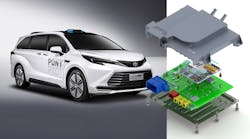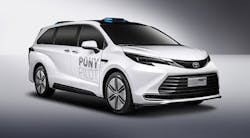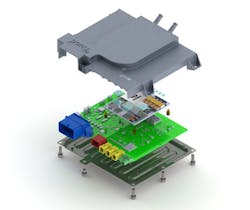Level 4 Platform Built into Fleet of Toyota Sienna Robotaxis
What you'll learn:
- Details of the Toyota/Pony.ai Sienna-Automo Maas robotaxi.
- The foundation of the system: NVIDIA's DRIVE Orin.
- Test results and upcoming road testing.
Robotaxis—self-driving taxi services operated by ridesharing companies—are on their way to becoming a major mobility solution. Robotaxi operations require SAE Level 4 autonomous vehicles capable of operating without a backup driver, but are often monitored by teleoperators ready to take control of the vehicle at any time. Essentially, they’re limited by specific operating conditions, such as geography or weather.
According to SAE guidelines, a Level 4 car should be able to drive itself safely “even if a human driver does not respond appropriately to a request to intervene.” A Level 4 car will slow down, pull over, or park itself at a safe spot if the driver doesn’t take control when requested, which might happen in off-road driving or on unmapped roads.
By way of comparison, most of today’s advanced driver-assistance systems (ADAS) fall under Level 2, including Tesla’s Autopilot, Cadillac’s Super Cruise, and Volvo’s Pilot Assist. Where Level 1 vehicles control either speed or steering, vehicles at Level 2 can control both simultaneously.
The S-AM
Recently, the Chinese autonomous-vehicle startup Pony.ai announced its next-generation robotaxi is built on the NVIDIA DRIVE Orin platform. The computing unit will be manufactured on a standardized production line. The first model equipped with this system, Toyota’s Sienna-Automo Maas, is a seven-seat hybrid electric vehicle that will start road testing in China this year and be deployed within Pony.ai’s public robotaxi operations in the first half of 2023.
Toyota and Pony.ai began co-developing Sienna vehicles purpose-built for robotaxi services in 2019. The custom vehicles feature a dual-redundancy system and better control performance for Level 4 autonomous driving capabilities. “We have accumulated more than 10 million kilometers of autonomous mileage worldwide on open roads and throughout 2022 we will continue to invest in our leading R&D and global robotaxi operations,” said James Peng, co-founder and CEO of Pony.ai.
In the S-AM model, Pony.ai unveiled a new concept design for its autonomous-driving system, making the sensor suite more integrated and aesthetically pleasing while also more suitable for mass production. Among other design features, it includes rooftop signaling units that have a horizontal lighting unit on the front and three vertically placed lighting stripes on the rear. By using different colors and lighting combinations, the rooftop signaling units can provide external communication and interaction, demonstrating the robotaxi’s status and intentions.
Savvy Sensors
The Toyota’s sensor solution, containing a total of 23 sensors, includes four solid-state LiDARs on the roof covering a 360-degree field of view; the central mechanical LiDAR has been replaced with solid-state LiDARs. Three near-range LiDARs on the body of the vehicle cover the blind spots of the roof LiDARs. In addition, four millimeter-wave radars sit at the corners of the roof, and there’s one long-range forward-facing millimeter-wave radar. Furthermore, 11 cameras are deployed around the roof and body of the vehicle (in a combination of wide angle, super wide angle, middle, long-range, and traffic-light detection cameras).
The self-developed traffic-light camera has a resolution rate 1.5 times that of the previous-generation device. Coupled with its in-house sensor-fusion technology, Pony.ai said it will significantly reduce the cost associated with the solution by utilizing mass-produced, automotive-grade sensors.
All-Important Testing
Pony.ai has conducted road tests with the DRIVE Orin. Compared with the previous computing platform, the new generation is expected to have greater than a 30% increase in computing power, at least 30% less weight, and more than a 30% reduction in cost.
Pony.ai has government permission to conduct driverless tests and charge fees for public robotaxi services in Beijing, along with permits to test autonomous vehicles in many of China’s major cities. Last year, Pony.ai became the first company to conduct autonomous trucking tests on an open highway in China, and is the only company with autonomous trucking permits in both Beijing and Guangzhou.
NVIDIA’s DRIVE Orin achieves 254 TOPS (trillion operations per second) of performance, and includes CUDA and NVIDIA deep-learning accelerator (NVDLA) toolchain support. It’s designed to handle the large number of applications and deep neural networks that run simultaneously in autonomous trucks, while achieving systematic safety standards such as ISO 26262 ASIL-D.
Pony.ai’s relationship with NVIDIA dates back to 2017, when the company first adopted the DRIVE platform. Pony.ai is one of the first in the autonomous-vehicle industry to create a product portfolio featuring multiple configurations with one or more DRIVE Orin processors and automotive-grade NVIDIA Ampere architecture GPUs. This is said to enable scalable deployment across self-driving trucks and robotaxis.


